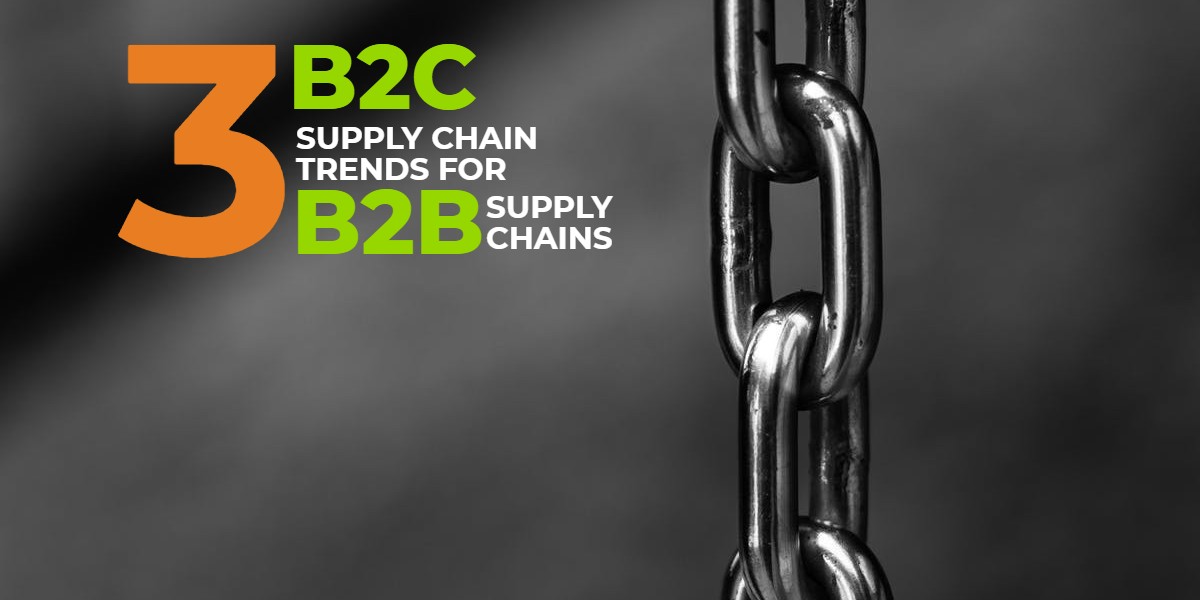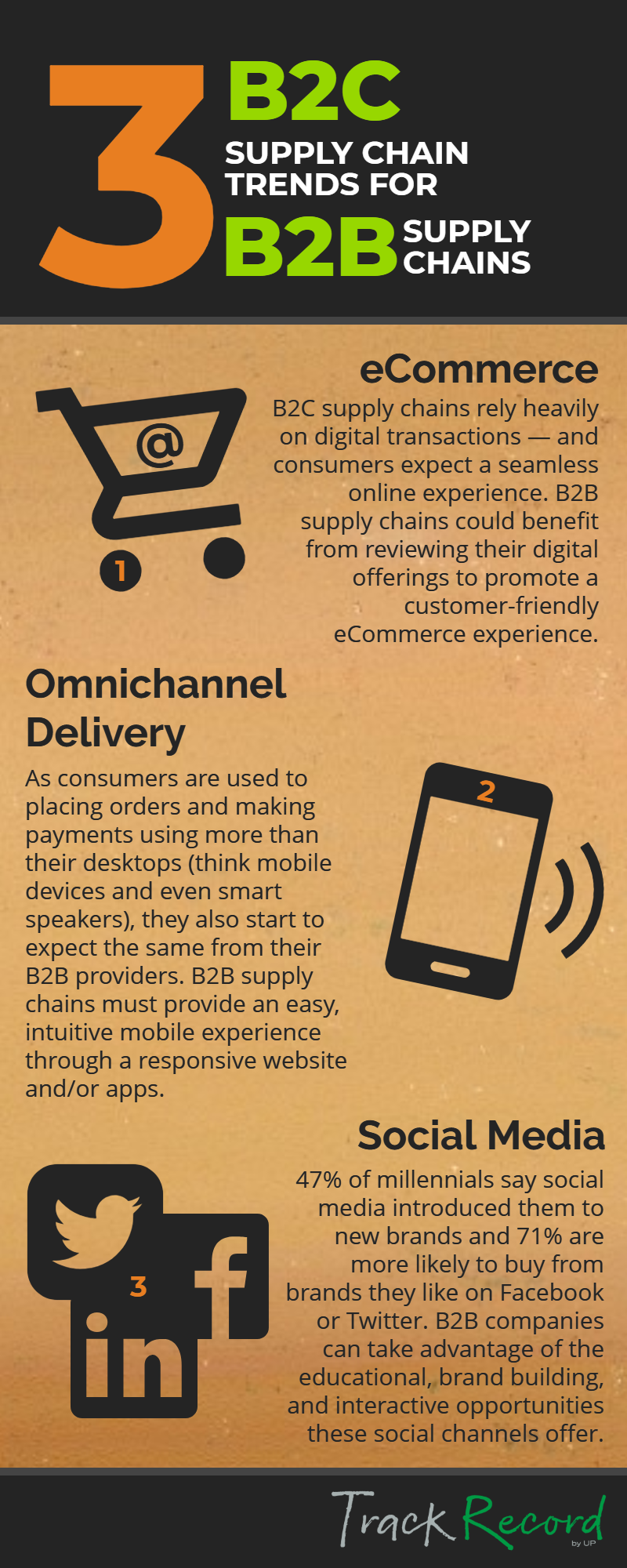The ultimate goal of any supply chain is to get a product to the customer. But who that end customer is — whether a business or a consumer — can change the way a supply chain operates. Business-to-business (B2B) and business-to-consumer (B2C) supply chains serve different supply chain needs, and therefore offer very different customer experiences. But here’s the thing: those B2B customers, having encountered the speed and ease of B2C supply chains in their personal lives, are now seeking B2C experiences in their B2B interactions.
What does that mean? B2B supply chain participants may need to borrow a page from the B2C playbook when it comes to the customer experience. Here are some lessons B2B supply chains can learn.
eCommerce
In the past, B2B sales have tended to be relationship based, with transactions between manufacturers, wholesalers, distributors and transportation companies happening over the phone or in person. But as B2C supply chains rely heavily on digital transactions — and consumers expect a seamless online experience — B2B supply chains could benefit from following suit. Just like consumers, B2B customers are performing more of their supply chain research online, and expect to be able to follow through with their transactions online as well. That means B2B supply chains may need to review their digital offerings to promote a customer-friendly eCommerce experience.
What does “customer friendly” mean? Self-service via the website or app for a wide variety of functions, including account information, purchasing, inventory tracking and management and payment, and the ability to perform those functions 24/7. Even B2B customers need to know their needs and problems are being addressed no matter the hour, so B2B providers should consider the solutions B2C providers offer, like self-service resources, chat bots, and live chat.
Omnichannel Delivery
Digital experiences don’t mean “desktop.” As more and more consumers grow accustomed to placing orders and making payments using their mobile devices and even smart speakers, they also start to expect the same from their B2B providers. So when it comes to offering a digital experience, B2B supply chains must provide an easy, intuitive mobile experience through a responsive website and/or apps.
Social Media
Social media might seem like fluff, but Forbes cites a study stating 47 percent of millennials say social media introduced them to new brands and 71 percent are more likely to buy from brands they like on Facebook or Twitter. B2B companies can take advantage of these channels to educate customers about their products, build brand awareness, provide customers another channel to get in touch with the company, and offer a platform for customers to interact with their fellow buyers.
Is There a B2B Advantage?
Even though B2B supply chains may be able to learn some valuable lessons from their B2C counterparts, B2B supply chains do have some clear advantages. Because businesses buy in bigger quantities (and often on a recurring basis), they can establish contracts to set standardized shipping rates. And, because businesses rely so heavily on products being shipped in and/or out of their facilities on a regular basis, it often makes sense to invest capital in their supply chains, providing access to economical shipping modes, like rail.
Although B2C supply chains may have a leg up from a technology standpoint, B2B supply chains have a critical human element. While technology can provide amazing opportunities to answer questions, provide customer service resources and provide an avenue to manage the supply chain, at the end of the day, the B2B supply chain is fueled by relationships. In the B2B space, many companies have grown up with each other, deeply engraining their strategies, growth opportunities and success. This begs a final question: What can B2C supply learn from these advantages?
Are you ready to establish a relationship with a rail expert to learn how your business could grow with rail? Contact us and we’ll get you connected.
Related Article: The Port-to-Store Movement: Big Picture Thinking for Supply Chain Success










